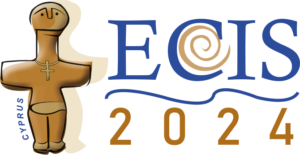Paper Number
1188
Paper Type
Short Paper
Abstract
Augmented reality (AR) is a promising ubiquitous technology that can be used in everyday life. However, there is limited research on the use of AR in individuals' everyday lives. This research aims to gain insights into the concerns and requirements of prospective users and the potential of the technology. A two-fold process was followed, in which we first conducted a structured literature review to examine the relevant literature in the field of AR, everyday use, and user needs. Subsequently, semi-structured interviews were conducted with students as potential users to gain further qualitative insights. We found both benefits (e.g., better visualization, simplification of tasks, retrieval of information) and drawbacks (e.g., distraction from visualizations merging with the real world or less social interaction) in the daily use of AR devices. Further research should address these findings and what constraints should be considered when developing applications for a holistic digital world.
Recommended Citation
Murlowski, Christian; Bach, Maximilian Jannis Léon; and Morana, Stefan, "Investigating the Everyday Use of Individuals with Augmented Reality" (2024). ECIS 2024 Proceedings. 2.
https://aisel.aisnet.org/ecis2024/track24_socialmedia/track24_socialmedia/2
Investigating the Everyday Use of Individuals with Augmented Reality
Augmented reality (AR) is a promising ubiquitous technology that can be used in everyday life. However, there is limited research on the use of AR in individuals' everyday lives. This research aims to gain insights into the concerns and requirements of prospective users and the potential of the technology. A two-fold process was followed, in which we first conducted a structured literature review to examine the relevant literature in the field of AR, everyday use, and user needs. Subsequently, semi-structured interviews were conducted with students as potential users to gain further qualitative insights. We found both benefits (e.g., better visualization, simplification of tasks, retrieval of information) and drawbacks (e.g., distraction from visualizations merging with the real world or less social interaction) in the daily use of AR devices. Further research should address these findings and what constraints should be considered when developing applications for a holistic digital world.
When commenting on articles, please be friendly, welcoming, respectful and abide by the AIS eLibrary Discussion Thread Code of Conduct posted here.


